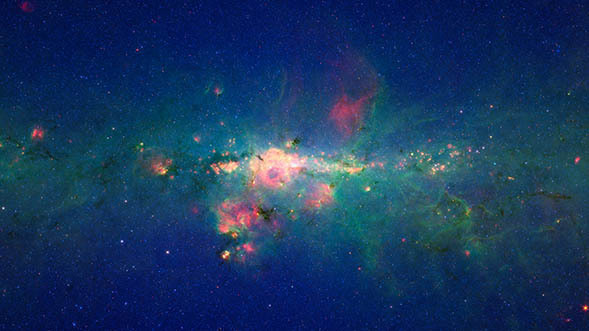
The Universe is continually radiating a wealth of information to Earth, sending signals in wide-spectrum of light. However, not all of these messages reach the ground. Because our planet's atmosphere blocks most radiation coming in from space, humans need to launch telescopes beyond it to get a complete cosmic picture.
Many of the Universe's messages are transmitted in infrared light, which our sky heavily filters. Infrared waves are too long for our eyes to see, but our nerves feel them as heat. In space, any object that has a temperature above zero Kelvin (- 459.67 degrees Fahrenheit, or -273.15 degrees Celsius) radiates in the infrared.
This section explores how NASA's infrared Spitzer Space Telescope contributes to the study of: Stars, Planet Forming Disks, Exoplanets, and Galaxies and the Universe's Origins.



